Jupiter Observations with the Boston University Imaging System
Using the 0.1-meter telescope at the Boston University Station at McDonald
Observatory, we image the energetic sodium atoms which comprise Jupiter's
extended `magneto-nebula'. These atoms are ejected from the atmosphere
of Jupiter's volcanic moon Io by the interaction with Jupiter's plasma
torus. The field of view in these images is approximately 6 degrees across,
and we use an intensified CCD camera to capture the very faint emission
at the outer edges of the nebula.
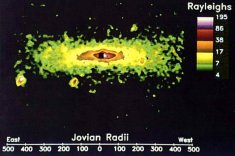 |
In January of 1990, the sodium magneto-nebula was visible out to at
least 400 Jovian radii. (Mendillo et al., The extended sodium nebula
of Jupiter, Nature, 348, 312-314, 1990.) |
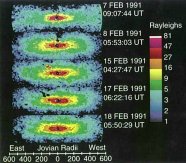 |
Subsequent imaging in February of 1991 showed the nebula out to at
least 500 Jovian Radii. The overall brightness and shape of the nebula
did not change significantly over the 11-day span of observations. (Flynn
et
al., The Jovian sodium nebula: Two years of ground-based observations,
JGR,
99, 8403-8409, 1994.) |
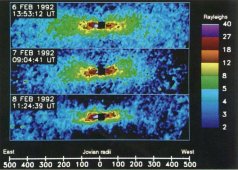 |
In 1992, the nebula was significantly less bright than in the previous
two years. Additionally, the nebula grew visibly dimmer over the two-day
observing period. (Mendillo et al., Imaging Observations of Jupiter's
Sodium Magneto-Nebula During the Ulysses Encounter, Science, 257,
1510-1512, 1992.) |
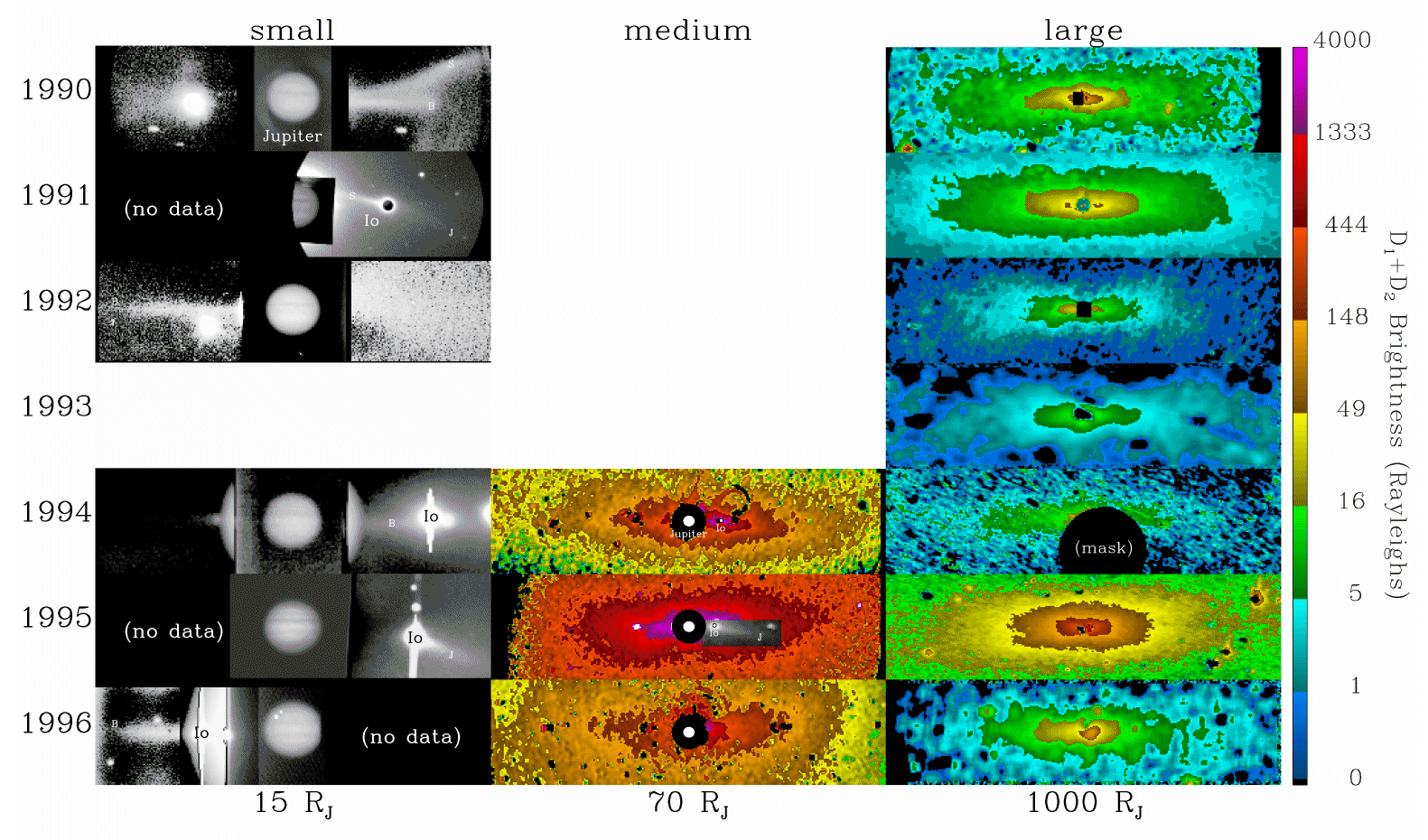 |
Data images of the sodium clouds. Left column: small field of view (FOV)
spanning 15 Jovian radii (RJ). Middle column: medium FOV spanning 70 RJ.
Right column: large FOV spanning 1000 RJ. Jupiter is at the center of each image.
The banana cloud (“B”), jet (“J”), and stream (“S”) are labeled in the small
FOV images. Small FOV images are not calibrated for absolute brightness, so relative
brightness above the background nebula brightness is indicated in gray-scale,
with each year scaled according to the intrinsic brightness of the Na. Note that
Io saturates a region in the small FOV images that is much larger than Io itself,
and that an occulting mask was placed over Io in the 1991 image. A larger occulting
mask for lunar observations was used in the 1994 large FOV image, obscuring much
of the central region of the Na nebula. In the 1995 medium FOV, a region of the
image is displayed in gray-scale to highlight the jet. Circles indicating Io’s
location in the medium FOV are not drawn to scale.
|
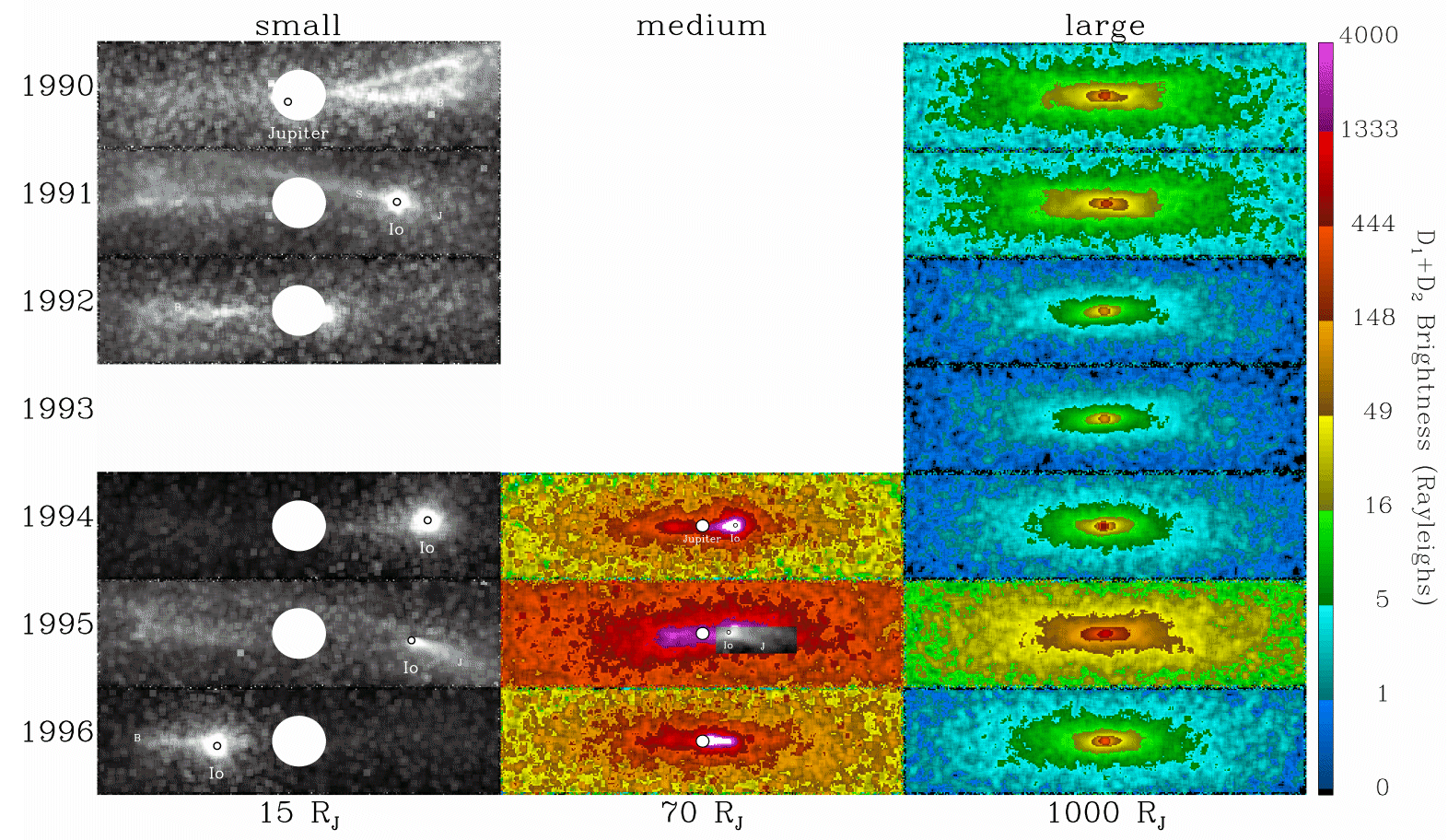 |
Combined models of sputtering, stream, and jet processes for complete data set.
The fields of view are 15, 70, and 1000 RJ from left to right. The banana cloud (“B”),
jet (“J”), and stream (“S”) are labeled in the small FOV images.
|
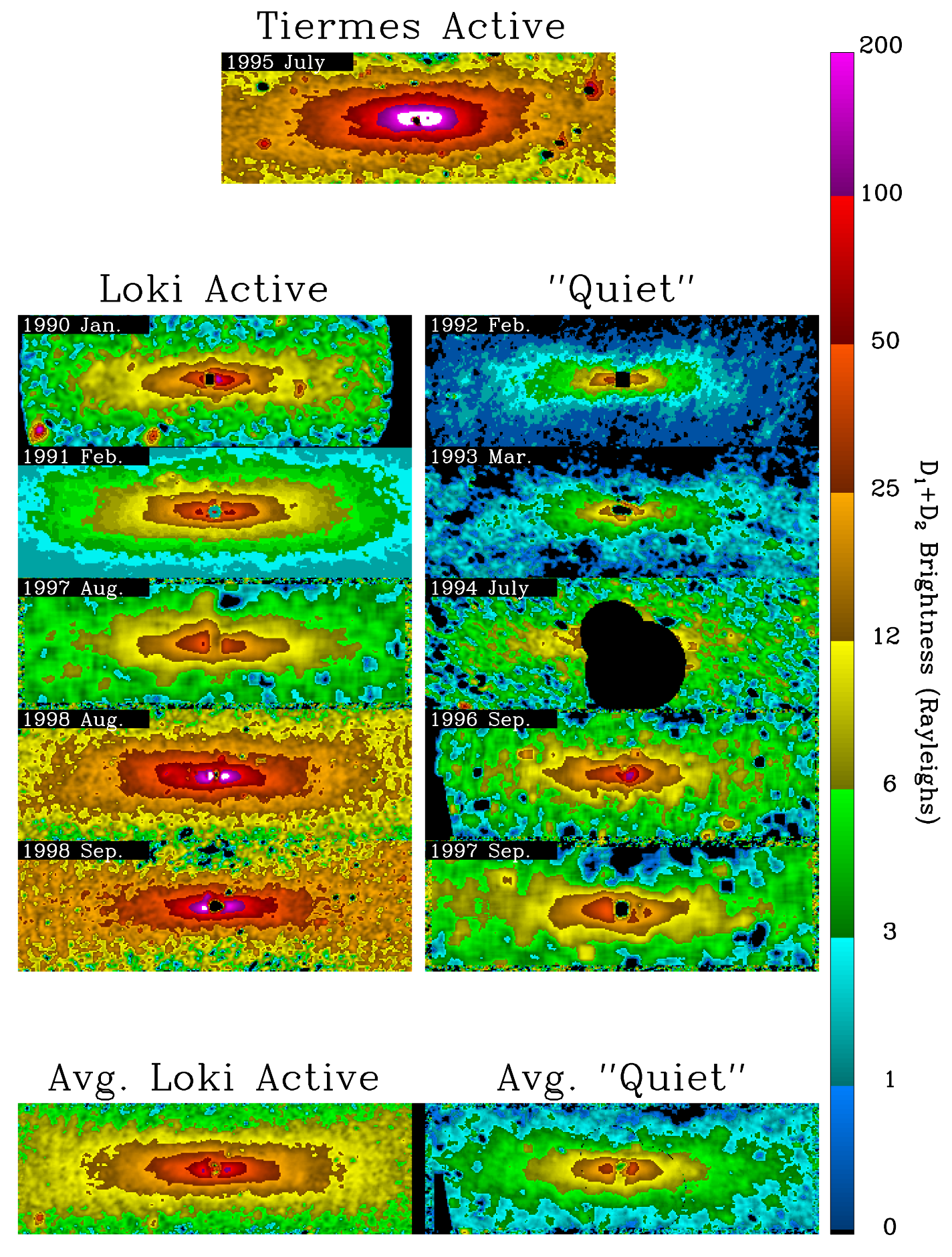 |
Summary of Jupiter’s sodium nebula and Io’s volcanic activity analyses for the
9-year period 1990-1998. Top panel: image from 1995 taken during an eruption of
Tiermes Patera. Middle panels: remaining nebula images sorted by Loki’s volcanic activity
level. Occulting masks of various sizes were used to block Jupiter and its inner moon
(and especially so in the 1994 panel). Bottom Panels: averages of active an quiet nebulas.
|